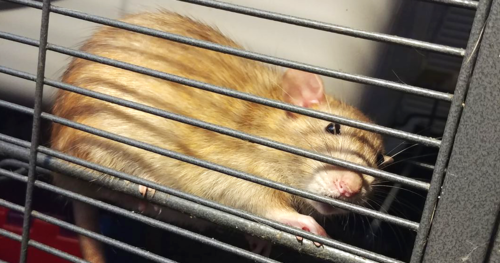You Smell!
1. Cleaning too much can cause an increase in marking and, subsequently, an increase in smell.
Yes, this even applies if you only have does! Too much cleaning makes them feel like they need to overmark in order to make their cage feel like theirs again. A full clean every 5 to 7 days with minor spot cleans is all you need to do.
We all know to toss out old bedding and give bars on cages a good scrub, but most of us don’t think to clean the walls and floors surrounding the cage or break the cage down to rinse out the joints. Cages like the critter nations are notorious for holding smell because urine gets down into those joints and ferments. A critter nation or similar cage needs to be fully broken down and throughly rinsed every 3 months at maximum.
Fabric, especially if you’re using it as the main bedding, can become dangerous with how quickly ammonia levels can rise. If fabric is used as hammocks, it needs to be swapped out for clean hammocks every 48 to 72 hours. Fabric as actual bedding needs to be changed every 24 to 48 hours and this is why BTR doesn’t support the use of fabrics as a main bedding. Zero odor or ammonia control.
The type of bedding you use has a huge impact on odor. Kiln dried pine and aspen flakes are (scientifically proven) the best bedding type for controlling odor and ammonia. Plus: it’s super cost friendly! Paper beddings like carefresh tend to be dusty, have little to zero ammonia or odor control, and the dust has been found lining the lungs of necropsied lab rats.
Wood in rat cages soaks up urine and odor and is impossible to clean. Have a wooden house? Take a whiff of that bad boy and you’ll see what I mean. Ditch the wood for plastic houses and use bones as chew toys. (I like the rib bones marketed toward dogs. Rats grind bones instead of splintering like dogs so a cooked bone is perfectly safe.)
Just like anything else, a good balanced diet means less smell. A staple lab block is the best choice when it comes to food. (I personally prefer Mazuri 6f, but normal mazuri and oxbow adult essentials are good, too.) Certain dog foods are also good substitutes, but takes some trial and error to find what works best for your mischief. Limit fresh fruits and veggies as this can make urine and feces especially potent.
Religiously cleaning and providing quality food won’t do much if your cage is too small for the amount of rats you have.
The cage must be appropriately sized. BTR follows lab standards for the minimum and cage adults by allowing 1 sq ft for adult rats per rat.
YOU MAY LIKE:


